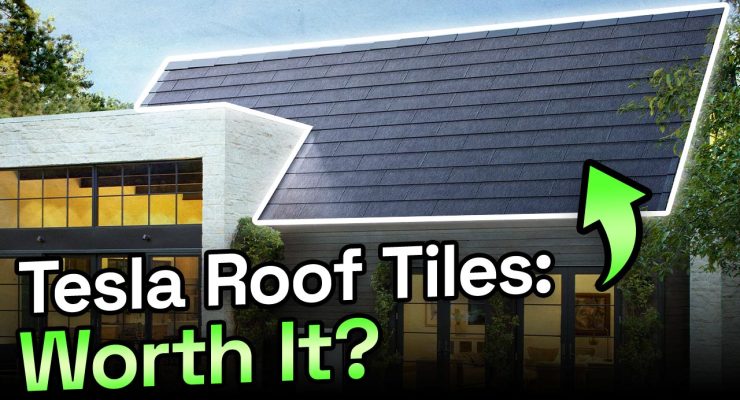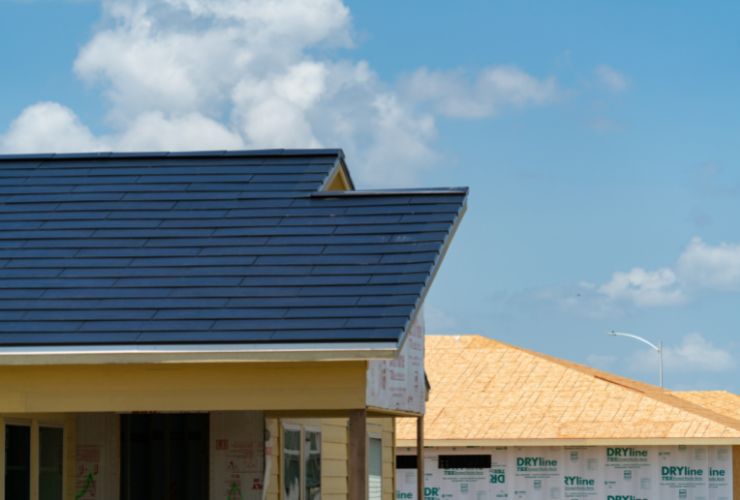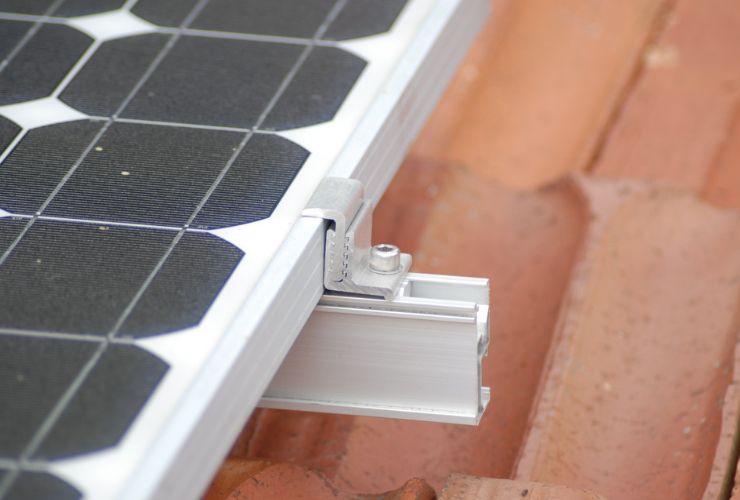
Fast read
Traditional solar panels can be replaced with Tesla's solar roof tiles. Tesla Solar roof tiles are more compact and are often more aesthetically pleasing. In addition, to support their lifetime guarantee, these solar roof tiles are three times stronger than conventional roof tiles and are constructed of tempered glass.
They are currently around three times more expensive than conventional solar panels. In addition, due to the small size of the tile and the reduced surface area for power production, they could not be as effective as conventional solar panels.
Solar roof tiles may be a suitable alternative for specific homes. Still, they may not be the ideal solution for everyone due to their high cost and potential efficiency and durability difficulties.
What are the advantages and disadvantages of Tesla solar roofs?
After Elon Musk unveiled Tesla’s new product, solar roof tiles, in 2016, there was a lot of excitement. Tesla is the expert in creating mass excitement for its products, even if these products do not always hit the spot. One of the products which have not taken off, like the Tesla electric cars, for example, is the Tesla solar roof tile, and there are many logical reasons for this.
The history of roof-integrated solar
Having large solar panels mounted on your roof can be visually challenging, especially on the cheaper solar power system installs, where the installers under the pump will plonk the panels anyway.
I often hear owners of prestigious homes say: “There is no point saving $1200 per month on my electricity bill, and my house has just become $40,000 uglier.”
For this reason, building-integrated solar, from the solar film on windows and roof integrated panels and smaller solar tiles, have been popular with architects and home designers for the last decade.
Unfortunately, the cost of these customised products, three to four times the cost of conventional mass-produced solar panels, has meant that many companies have come and gone, leaving these technologies stranded, unsupported, and with a questionable reputation.
What are they?
Solar roof tiles, as the name suggests, are much smaller and more compact than conventional PV panels. When placed together can achieve solar energy generation in small corners and edge areas where standard panels can not go.
Ideally, the Tesla roof tiles are used on a new home, but a retrofit should theoretically be possible.
Tesla solar roof tiles can completely replace your current roof tiles. So, for example, if you currently have concrete tiles on your roof and invest in Tesla solar roof tiles, you should be able to undertake a complete swap with no issue.

The Advantages
Aesthetic appeal
The critical advantage of Tesla solar roof tiles is their visual appearance. The cells integrate into the tiles, so no one notices the standard panel-type solar system.
It can enter little corners where conventional panels will not fit
A second advantage is the compactness of the actual solar roof tile. Large solar panels can only be placed on roofs with many corners or gables, limiting their placement. The advantage of the solar roof tile is that all those seemingly wasted small areas when installing solar panels can now be filled with electricity-generating cells.
The Tesla solar roof tiles can fit around obstructions for regular panels, such as skylights and vents. This could help maximise the true potential of your roof’s solar energy as long as the roof tiles use higher-efficiency solar cells.
Built strong
A third advantage is that each tile is three times stronger than traditional terracotta and concrete roof tiles. Tesla solar roof tiles are made from tempered glass in four different options – Tuscan style, slate, textured and smooth. No matter what option you select, they all look like traditional roof tiles and come with a lifetime guarantee.
The Disadvantages
Extremely expensive
While Tesla Solar Roof Tiles provide several benefits, you do have to pay a premium price. An Electrek article suggests that 400 square meters of Phase 1 solar roof tiles with a 12.3kW capacity will likely cost between $100,000 to $130,000.
This Tesla price is similar whether you are building a new home or replacing the roof of your current house.
A conventional top-of-the-range 12.3 kW solar panel system will set you back a maximum of 15,000 – $20,000, and the roof tile element will not cost more than $45,000 for a new roof.
Durability in the Australian climate
The 2nd disadvantage is the after-sales service and spare part situation. While Tesla would have run many tests during pre-production, unique issues can always occur in our harsh Australian climate. One of the main concerns is the maintenance of the tiles – both the costs and processes.
For example, who would you call when there is an issue? A roofer solar installer, or a particular Tesla tile expert, who most likely charge a hefty fee. Will these professionals know how to fix all the potential issues?
I also wondered who would keep spare tiles for many decades. What if an intense hail storm hits your roof in 10 years? Will matching Tesla solar roof tiles still be available in significant numbers, or will there be a shortage?
Technical challenges
Then there is the issue of connection points. In conventional solar systems, the plugs connecting the panels are seen as weak spots as water penetration, corrosion, and UV can challenge the integrity of these plugs over the years.
The Tesla solar tile roof somehow connects the tiles, and it has many hundred electrical connection points.
Should one of them corrode because of water penetration, how will the repair person easily and quickly find the one lousy connection point in a sea of a hundred connections? Tesla might have an easy answer to this, but our detailed research has not been able to unearth them.
Also, if a 400 square meter roof can deliver a 13.2 kW system, the cells in the Tesla tiles are relatively low in efficiency. A standard 400W panel occupies about 2 square meters. Therefore a 13.2 kW system will need 33 panels and 66 square meters of roof space, considerably less than the Tesla offering.
Potential performance disadvantage in hot weather
Finally, solar cells do not like high temperatures and perform less and less when the roof gets hotter than 25 degrees Celsius. Solar panels are installed above the ordinary roof tiles with an approximate 100 mm gap to allow wind flow below the panels for cooling and heat evaporation, for this reason.

Are they available in Australia?
Tesla initiated the installation of their solar roof tiles in July 2021. However, the company, like many others affected by COVID-19, is facing supply chain challenges, leading to delays in acquiring and transporting the tiles.
If you’re considering purchasing Tesla solar roof tiles, it’s crucial to contact the company directly to check for availability. The ongoing supply chain issues may impact delivery timelines, making it essential to stay informed before making any decisions.
Tesla’s solar roof tiles are known for their innovative design and energy efficiency, increasing their demand. To avoid potential delays, proactively reach out to Tesla’s customer support and confirm the availability of the tiles before finalising your purchase. Stay informed and make well-informed decisions for a smooth and timely solar installation.


